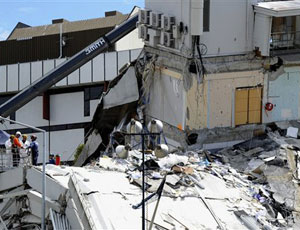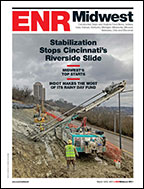An engineer on the ground in Christchurch says that New Zealand�s seismic retrofit code and/or construction methods should be strengthened based on the damage to recently upgraded buildings.

Many other Christchurch buildings, damaged in many cases as a result of soil liquefaction, were rendered uninhabitable and also still pose a public threat because they might collapse, says the engineer, Amir Gilani.
Several recently seismically retrofitted buildings collapsed, including the Christchurch Cathedral, says Gilani. ”Clearly, the retrofit criteria or methods failed,“ says Gilani.
The magnitude-6.3 earthquake, the second to hit Christchurch since September, struck on Feb. 22 and Gilani, an engineer with Los Angeles-based Miyamoto International Inc., left for New Zealand the next day.
The official death toll has risen to 102, with 228 people missing. Insurance losses are estimated at $12 billion compared to the $3.8 billion in September�s quake, according to sources.
”In addition to the rising death toll and the human suffering, the damage to the downtown buildings caused by widespread soil liquefaction is extensive and a continuing danger to the inhabitants,“ says Gilani.
In some areas, more than 20% of the buildings have collapsed. ”We have visited many industrial buildings where our team witnessed the total collapse of the structures, wiping out equipment and inventory,“ he adds.
”Many office buildings have fared no better, resulting in a complete shutdown of the central business district,“ Gilani continues.
This is in contrast to what happened in September 2010 during a magnitude-7.1 earthquake, he says. ”Some buildings that withstood that quake are no longer standing today,“ he adds.
Structural engineers the world over are somewhat surprised that several contemporary buildings collapsed even though the quake was extremely shallow. Centered 10 km from Christchurch, on South Island, the quake�s depth was only 5 km below the surface.
Engineers are not surprised the temblor caused extensive damage to the older, unreinforced masonry buildings—among them several churches. Their masonry is heavy, brittle and vulnerable to earthquake shaking.
But the collapse of several newer buildings, including the Pyne Gould Guiness Building, is much more curious.
”This quake was pretty much a bullseye�it was quite a large magnitude-6.3 event and so close to Christchurch that we weren�t surprised to see significant damage; at that close range,...



Post a comment to this article
Report Abusive Comment